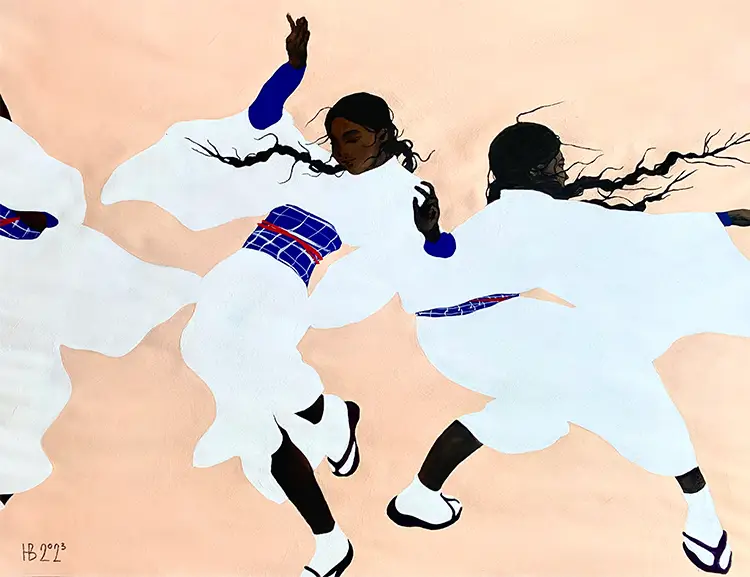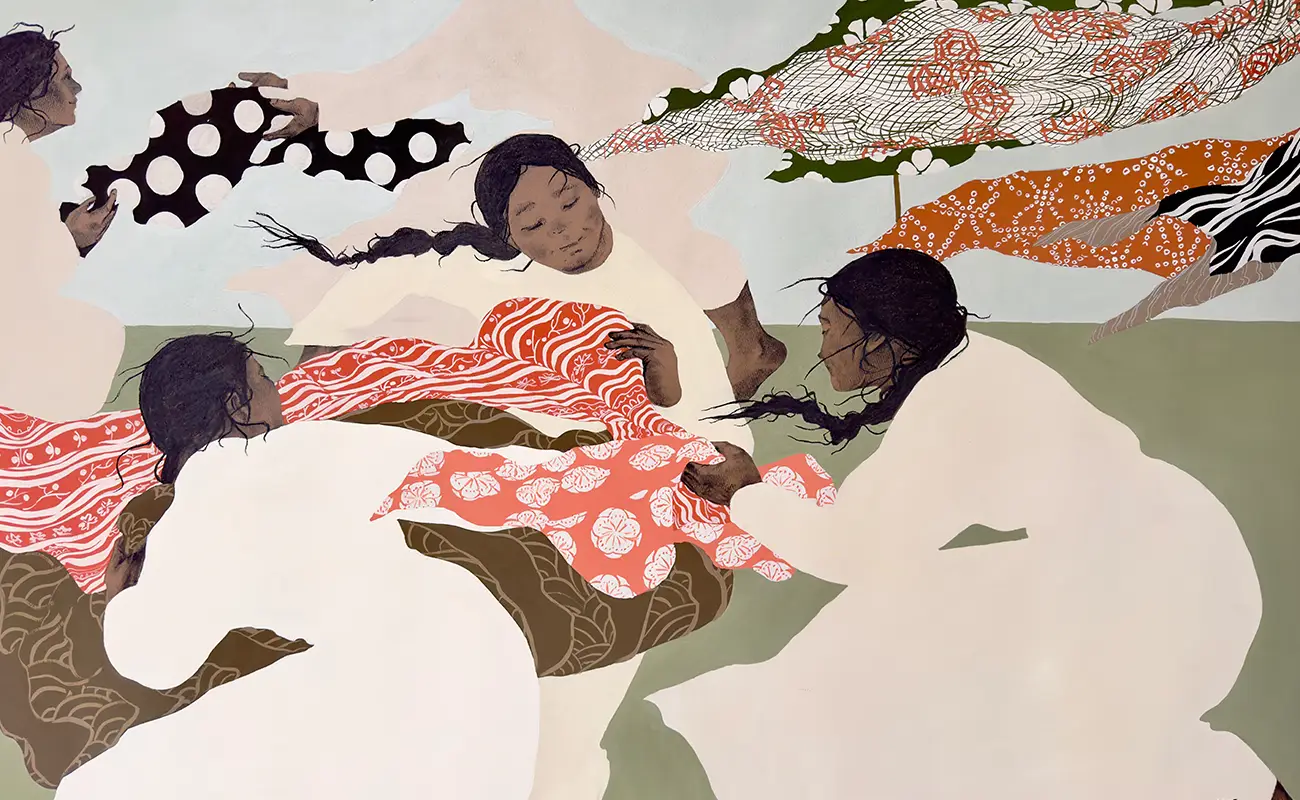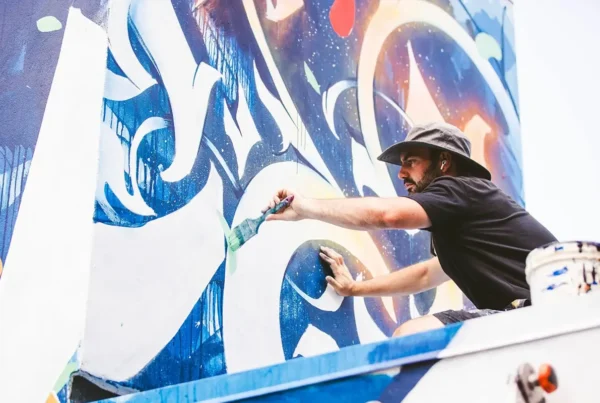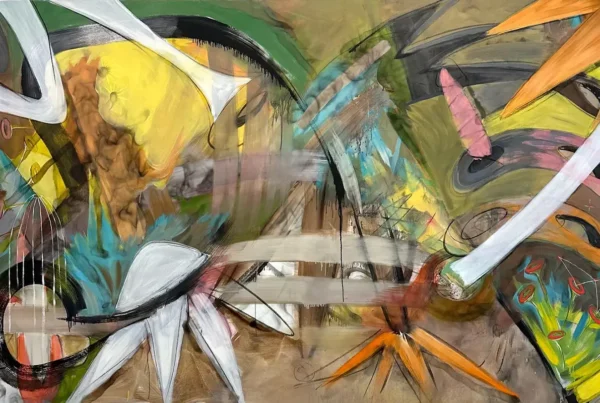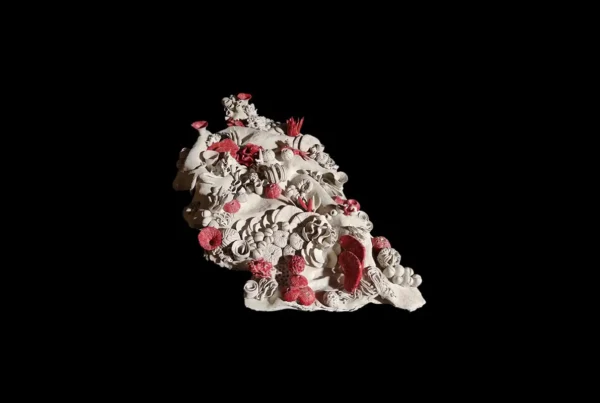“My work is a combination of memory, observation, and silence, expressed through minimal but resonant forms.”
A Poetic Minimalism Drawn from Movement and Memory
Natalia Zanchevskaia’s journey as an artist is etched with motion—geographical, professional, and emotional. Originally from Siberia, she has lived across continents, shaping a practice that draws deeply from her nomadic path. Trained initially in costume design, she spent a decade immersed in the fashion industry before turning to film, where her work as a costume designer refined her sensitivity to form, rhythm, and the expressive power of silhouette. These experiences instilled in her an instinct to notice the quiet tensions within an image—the way a curve or fold can embody feeling. Having recently spent over a year in Tokyo and now based in France, Zanchevskaia absorbs cultural aesthetics not as fixed styles, but as languages of perception, which she reinterprets through her subtle, poignant compositions.
Her visual language thrives on restraint. Zanchevskaia’s work does not seek to explain but to evoke. She refers to her style as “visual poetry,” where emptiness becomes an active space rather than a void. Her compositions are rooted in a minimalism that is neither cold nor distant; instead, it holds warmth in its silence, offering a space for reflection. Drawing inspiration from Japanese aesthetics, especially the concept of ma—the space between things—she embraces fleeting states of being: memory, time, absence, and the physicality of stillness. She builds her images through line, shadow, and rhythm, often omitting narrative in favor of suggestion. In doing so, she encourages the viewer to complete the picture with their own sensations.
Zanchevskaia’s artistic voice emerged gradually, shifting over time from external collaboration to internal dialogue. Her early fascination with Japanese fashion and the contemplative documentary Notebook on Cities and Clothes by Wim Wenders sparked a desire to translate inner experience into form. Starting with fashion design, she created original collections that explored movement and material. Transitioning into the film world allowed her to further investigate the expressive relationship between body and fabric. Eventually, she turned to painting and drawing as a more intimate means of communication—one unmediated by function or narrative structure. Her current work reflects this return to essence, where the act of mark-making becomes a quiet affirmation of presence.
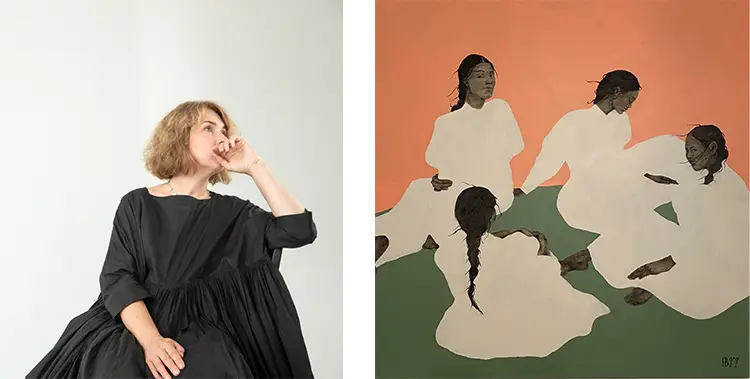
Natalia Zanchevskaia: Carving Emotion Through the Subtle Force of Line
Working primarily with charcoal, gouache, and acrylic, Zanchevskaia treats each medium not simply as a tool, but as a conceptual partner in her process. Charcoal, in particular, speaks to her fascination with impermanence—it can be erased by a breath or preserved as a whisper of touch. The material’s fragility reflects her recurring interest in transience and vulnerability. This preference for volatile, sensitive mediums mirrors her themes: memory, time, and the elusive nature of presence. Her approach is meditative, leaning into the instability of the medium to capture fleeting emotional states. Over time, she introduces color selectively—often in the form of landscape, clothing, or bodily gesture—using paint and ink to add durability and resonance to specific moments.
One deeply personal piece that encapsulates her approach is Red, a large-scale work that marked the beginning of a series exploring the language of color. Measuring 130 by 130 centimeters and composed of acrylic and charcoal on canvas, the painting is more than an abstract meditation—it is a convergence point of historical symbolism, cultural memory, and emotional depth. In the center of a crimson field, two female figures appear to emerge and dissolve simultaneously. Their hair, rendered as threadlike strands, morphs into roots and nerves, connecting them to the red that both envelops and exposes them. The work invokes the medieval hierarchy of color, where red signified strength, nobility, and desire, while also carrying associations of fragility and exposed emotion. In Red, Zanchevskaia allows color to speak as its own language—layered, unspoken, and timeless.
Her transition from wearable art to visual art has not diminished her attention to the body. On the contrary, the human figure continues to appear in her compositions, not as a subject to be depicted, but as a presence to be felt. Through folds, shadows, and subtle gestures, the body becomes a trace—an echo rather than a form. This is where her background in costume design resurfaces, not as clothing but as memory inscribed onto space. Zanchevskaia’s lines are not confined to contour; they suggest breath, hesitation, and movement stilled in a moment. Each drawing becomes a meditation on the invisible boundaries between self and world.
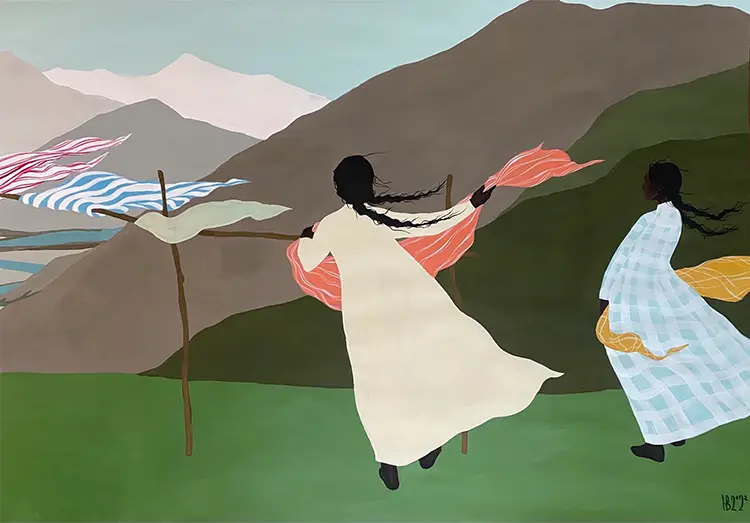
The Architecture of Stillness: Materials, Space, and Rhythm
Zanchevskaia’s creative environment is as considered as her artwork. Natural light is essential to her process—not only as a technical necessity but as an emotional guide. She orients her day around sunlight, allowing it to structure her attention and internal cadence. Artificial light disrupts this balance, severing the connection between visual clarity and intuitive rhythm. Silence, too, is central. She avoids unnecessary noise, preferring a calm, undisturbed setting where concentration can deepen into immersion. When in the flow of work, external distractions fall away—meals, notifications, and even time itself lose their hold. This sensitivity to rhythm underscores her entire practice: making art becomes an act of attunement, both to the outside environment and the inner pulse of feeling.
Her discipline in maintaining such a space reflects the kind of work she creates—quiet but not passive, spare yet emotionally charged. The atmosphere around her mirrors the world within her compositions, where light, form, and space are handled with precision and care. She creates not only with her hands, but with her entire perceptual system—attending to mood, temperature, and rhythm as if they were part of the canvas. This integration of external setting and internal state allows her artworks to emerge organically, without force. Each piece is not built up through labor but allowed to surface through attentiveness.
Zanchevskaia’s artistic influences are as multifaceted as her experiences. Japanese designers such as Yohji Yamamoto and the collective ethos of Comme des Garçons were formative, introducing her to the power of visual understatement and ambiguity. Their vision of the image as a space for contemplation resonates throughout her current work. She is equally inspired by poetry, film, and classical painting—artists like Paul Gauguin, Toulouse-Lautrec, Alexander Deineka, Yuri Pimenov, and Tsuguharu Foujita. What draws her to these figures is not style alone, but their ability to evoke complexity with restraint. She admires their sensitivity to line, their treatment of the body as a bearer of emotion, and their use of color not as ornament, but as spatial and emotional resonance.
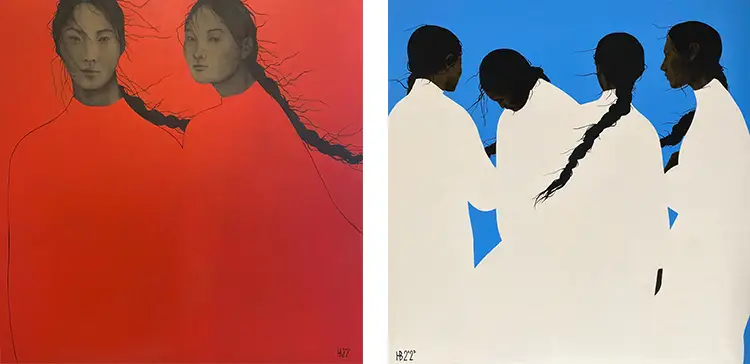
Natalia Zanchevskaia: Crossing Boundaries, Drawing the Unseen
An idea that has quietly matured within Zanchevskaia is a project that weaves together her Japanese influences and European sensibilities—a synthesis of aesthetic traditions and philosophical undercurrents. While in Japan, she began a drawing series titled Sekimori-ishi, inspired by the symbolic stones placed in traditional gardens to subtly indicate forbidden passage. Bound by rope in a cross pattern, these stones are not barriers in the physical sense but signify an inner hesitation—a self-imposed boundary that prevents movement or choice. This motif became a metaphor for internal restrictions: the silent rules we craft for ourselves, the hesitation that arises from fear or doubt.
She envisions Sekimori-ishi evolving beyond its initial drawings into an immersive experience, one that invites the viewer not just to observe, but to slow down and feel their own internal terrain. This space would offer a pause—an invitation to inhabit the quietness that her work so often gestures toward. The project aligns with her belief in art as a contemplative act, where the viewer becomes part of the composition through their own stillness and perception. Rather than directing attention outward, the work would reflect inward, toward personal moments of resistance and awareness.
For Zanchevskaia, this concept embodies the cross-cultural rhythm she has come to understand through movement—between Siberia, Tokyo, and France. Each place altered her relationship to time, space, and aesthetics, and these shifts have shaped her sensibility as much as her technique. Sekimori-ishi represents a merging of these experiences: a physical manifestation of the invisible codes we carry across borders and within ourselves. Her art offers no definitive answers, but it opens doors to perception—doors that may otherwise remain closed in the noise of daily life. Through subtle marks, whispered color, and spatial tension, Natalia Zanchevskaia captures what cannot be said, only felt.
